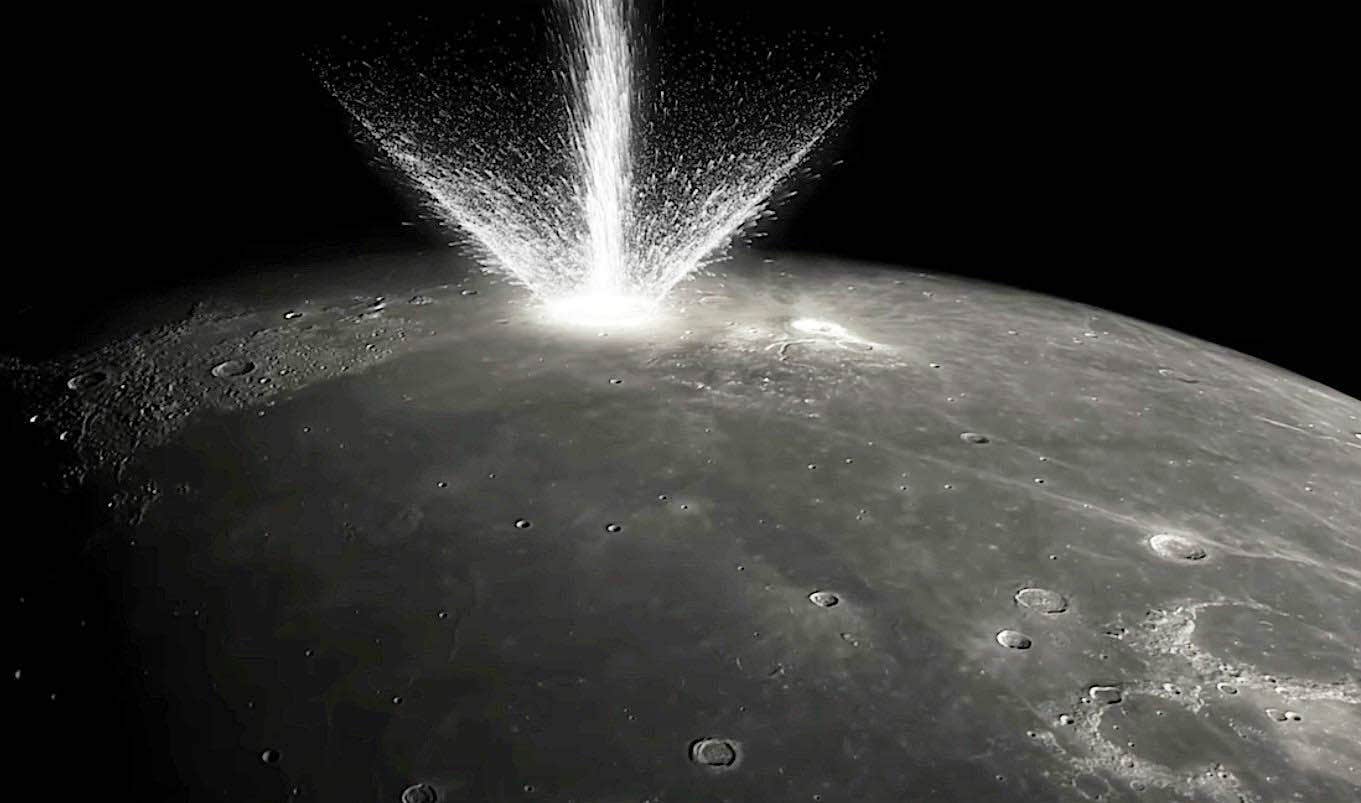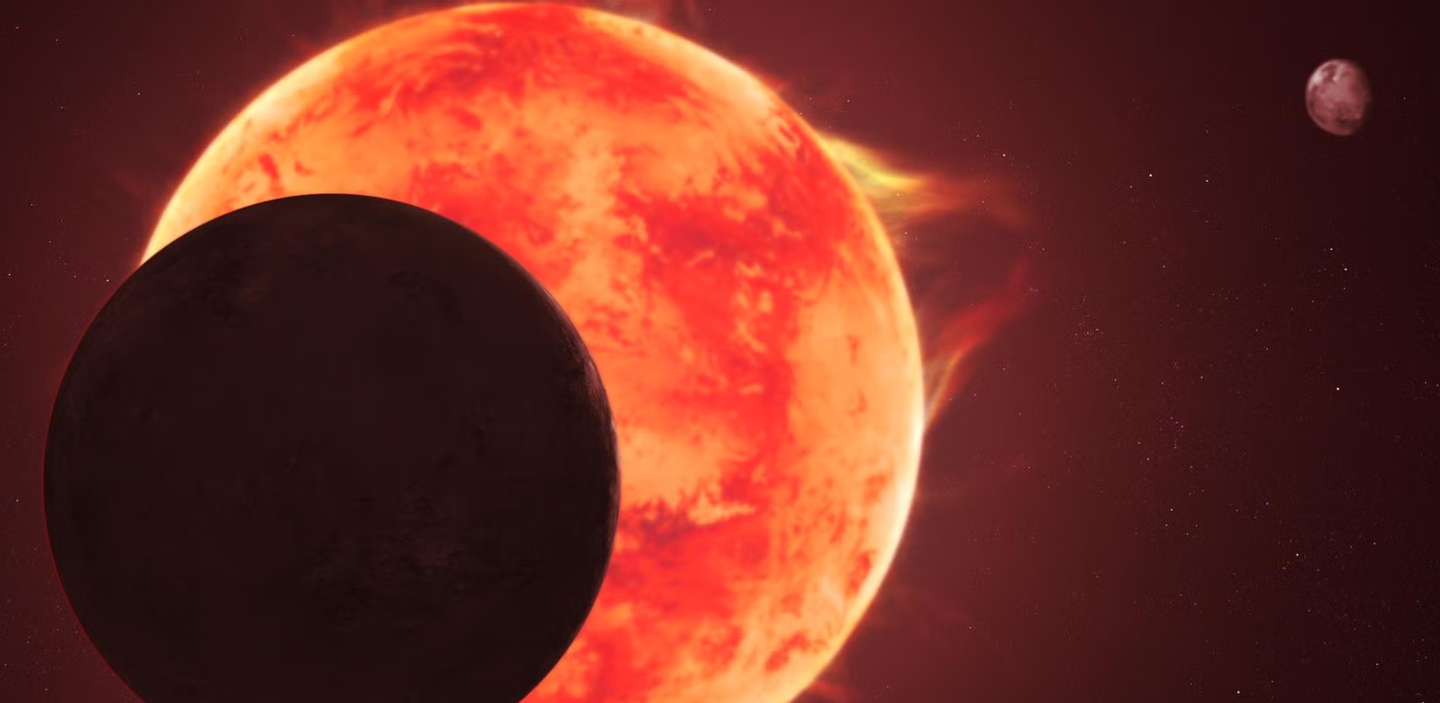Moon dust from Chang’e-6 mission reveals asteroids carried water to Earth
Chang’e-6 samples reveal rare CI-like meteorites, suggesting water-rich asteroids helped seed Earth and the Moon with volatiles.

 Edited By: Joshua Shavit
Edited By: Joshua Shavit

Scientists studying Chang’e-6 Moon samples discovered rare water-rich meteorite fragments, offering new clues about how water reached Earth and the Moon. (CREDIT: Wikimedia / CC BY-SA 4.0)
In a discovery that could rewrite what we know about where water comes from and the building blocks of life in the solar system, researchers have found rare meteorite pieces inside dust brought back from the far side of the Moon.
The findings are rooted in the China's Chang'e-6 mission, which returned samples from the far side of the Moon that never faces Earth.
A Rare Find from the Far Side
In just two grams of lunar soil, researchers discovered seven tiny fragments consisting of the mineral olivine—each tiny remnant of carbonaceous chondrites, a meteorite that is famous for having an plenty source of water and organic molecules. Such CI-like chondrites are extremely fragile and very rarely survive atmospheric entry into our planet.
That is why their find on the Moon is so significant. The Moon has neither an atmospheric shield nor significant geological activity, so it is a natural time capsule that preserves records of ancient space collisions that have since disappeared on Earth.
The international research team, was led by Xu Yigang and Lin Mang of the Guangzhou Institute of Geochemistry at the Chinese Academy of Sciences. Their work is the first conclusive evidence that volatile-rich asteroids in the distant past bombarded the far side of the Moon—and possibly Earth itself—with components required to make water and possibly life.
Asteroid tracking from the outer solar system
These CI-like meteorites are believed to have originated in the outer solar system prior to drifting inward with planetary formation. Others were subsequently delayed in order to impact the early Earth–Moon system, and remnants of them exist in the lunar surface recovered by Chang'e-6 billions of years later.
By studying the olivine crystals' texture, composition, and oxygen isotopes, scientists confirmed that the fragments were once part of molten chondritic bodies. The fragments would have formed rapidly after their parent meteorites vaporized when they collided with the Moon at high speeds.
When the researchers compared metal ratios—iron, manganese, and zinc—the chemistry of the pieces differed significantly from normal lunar rocks. Triple oxygen isotope analyses by a Secondary Ion Mass Spectrometer (SIMS) further confirmed their extraterrestrial origin, in accord with CI-type carbonaceous chondrites.
Rethinking the Moon's—and Earth's—Water Sources
This discovery not only fills a gap in the history of lunar geology; it destroys outdated beliefs about just how far volatile material entered the inner solar system. Since Earth's atmosphere disintegrates most fragile meteorites, its meteorite collection is but a fragmentary record of what actually battered our planet.
"Identification of CI-like materials in this work allows us to reevaluate Earth–Moon system chondrite proportions, considering Earth's biases in chondrite collection," the researchers explained.
Since the Moon's surface is not covered by an atmosphere and has no protective shield against cosmic material, it contains a more complete record of cosmic material. The presence of a greater-than-anticipated ratio of CI chondrites in lunar samples indicates that water-carrying asteroids previously contributed much more to the Moon—and consequently, Earth—than assumed.
CI chondrites are waterlogged and carbon-bearing molecules, and are first suspects for having supplied early planetary surfaces with the raw materials for oceans and organic chemistry. Scientists now believe that the same set of meteorites is likely responsible for water signatures previously observed in lunar rocks, and which contain the same oxygen isotope ratios.
Peering Back into the Solar System's Early History
Chang'e-6 findings also give researchers a new tool for identifying ancient impact material in moon and other extraterrestrial samples. The combined approach of the research—utilizing texture, chemical ratios, and isotopic signatures—offers a system for material exchange analysis throughout the solar system.
The researchers' discovery emphasizes just how little of the solar system's history can be uncovered on Earth directly. With its continued preservation of ancient impacts, the Moon may be our sole remaining record of the wild youth of the solar system.
Dust particles nearly invisible to the human eye are now helping scientists rewrite history on how water and organics moved from cold far-off parts of the solar system to hot, rocky planets near the Sun.
Practical Applications of the Study
These findings have the potential to transform the manner in which scientists track the origin of water and volatile elements on Earth and the Moon. The knowledge that CI-like chondrites were more common in the early inner solar system than at present is a new research frontier in the study of planetary sources of water and habitability.
The same method can be applied to future missions to the moon and asteroids to steer the search for samples that could have seeded life on Earth.
With further samples from future missions—in the form of missions to asteroid Bennu and the south pole of the Moon—due to arrive on Earth in the next few years, scientists will be able to establish whether water-carrying meteorites played a huge role in the development of our cosmic neighborhood than ever imagined.
Research findings are available online in the journal Proceedings of the National Academy of Sciences (PNAS).
Related Stories
- Moon's largest impact crater helps explain why the near side and far side look so different
- Planetary scientists reveal how the Earth and Moon actually formed
- Moon dust can help protect the Earth from climate change
Like these kind of feel good stories? Get The Brighter Side of News' newsletter.
Joseph Shavit
Science News Writer, Editor-At-Large and Publisher
Joseph Shavit, based in Los Angeles, is a seasoned science journalist, editor and co-founder of The Brighter Side of News, where he transforms complex discoveries into clear, engaging stories for general readers. With experience at major media groups like Times Mirror and Tribune, he writes with both authority and curiosity. His work spans astronomy, physics, quantum mechanics, climate change, artificial intelligence, health, and medicine. Known for linking breakthroughs to real-world markets, he highlights how research transitions into products and industries that shape daily life.



